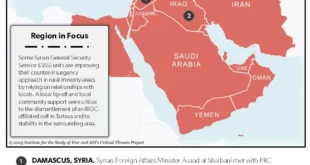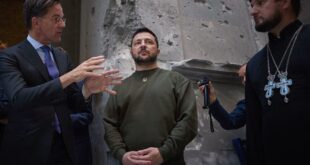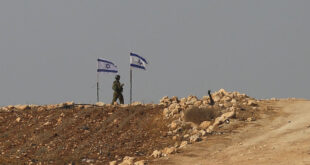Nagorno-Karabakh Conflict
Severest escalation since 1994 ceasefire erupted between Armenia and Azerbaijan along front line in Nagorno-Karabakh (NK) conflict zone, raising risk of worsening fighting in Oct.
Large-scale fighting 27 Sept erupted as Azerbaijani army attacked Armenian troops located along key sections of 200km-long front line in NK conflict zone: most intense fighting involving tanks, artillery, helicopters, drones and infantry took place south, north and north east of frontline. Fighting reportedly killed dozens and wounded hundreds of military personnel on both sides.
Azerbaijan 27 Sept reported taking control of several Armenian positions in southern part of NK conflict zone; de facto leader Arayik Harutyunyan next day said Armenian troops regained control of initially lost positions. Armenia, Azerbaijan and de facto NK entity 27 Sept declared martial law and started to mobilise reserve troops; on both sides, groups of volunteer fighters, mainly veterans of 1992-1994 war in NK, arrived in conflict zone to support fighting.
Civilian areas on both sides located close to front line suffered regular attacks, leading to at least 14 civilians killed and dozens wounded, including children. Towns situated far from front line faced artillery, rocket and drone attacks, including Armenian-controlled Stepanakert city 27 and 29 Sept, and Azerbaijani city Naftalan 28 Sept; Armenia 29 Sept reported attack on its town of Vardenis located close to NK conflict zone. Russia, France, Germany, EU, U.S., Iran, Organization for Security and Co-operation in Europe Minsk Group co-chairs and UN Security Council 27-29 Sept called for immediate ceasefire and return to talks. Turkey’s President Erdogan 27 Sept said Ankara would support Azerbaijan “with all means”; Armenia 29 Sept accused Turkey of downing its military jet, but Ankara same day denied its involvement. Reuters 28 Sept reported that Turkey deployed up to 1,000 Turkish-backed Syrian National Army fighters from Syria to Azerbaijan days before outbreak of fighting; Ankara and Azerbaijani President Aliyev 29 Sept separately denied report. Previously, deadly clashes 16-21 Sept broke out along state border between Armenia and Azerbaijan; Armenia 16 Sept reported one soldier killed and Azerbaijan 14-21 Sept reported one killed and two wounded; both countries called on public to prepare for imminent war or to be ready for adversary attack.
Azerbaijan
Authorities called on public to prepare for war after major deadly clashes with Armenia along front line of Nagorno-Karabakh (NK) conflict zone, raising risk of escalation in Oct. Largest-scale fighting since 1994 ceasefire 27 Sept erupted as Azerbaijani army attacked Armenian troops located along key sections of 200km-long front line in NK conflict zone: fighting reportedly killed dozens and wounded hundreds of military personnel on both sides (see Nagorno-Karabakh). Azerbaijan 27 Sept reported taking control of several Armenian positions in southern part of NK conflict zone; de facto leader Arayik Harutyunyan next day said Armenian troops regained control of initially lost positions. Govt 27 Sept declared martial law and started to mobilise reserve troops. Previously, deadly clashes 16-21 Sept broke out along state border between Armenia and Azerbaijan; Armenia 16 Sept reported one soldier killed and Azerbaijan 14-21 Sept reported one killed and two wounded; both countries called on public to prepare for imminent war or to be ready for adversary attack. Following police 22 March arrest of member of opposition alliance National Council of Democratic Forces and member of Musavat Party, Tofuq Yagublu, authorities 3 Sept sentenced Yagublu to four years and three months in jail on hooliganism charges; Yagublu went on hunger strike in protest, and on 11th day of strike was transferred to private clinic. More than 30 protesters 9-11 Sept gathered in capital Baku as well as Berlin, Toronto and other cities demanding Yagublu’s release; court 18 Sept revised Yagublu’s sentencing to prison term with bail, allowing him to return home. Govt 28 Sept extended COVID-19 lockdown to 2 Nov, while allowing some internal travel as of 8 Sept.
Armenia
Authorities called on public to prepare for war after major deadly clashes with Azerbaijan along front line of Nagorno-Karabakh (NK) conflict zone, raising risk of escalation in Oct. Largest-scale fighting since 1994 ceasefire erupted 27 Sept as Azerbaijani army attacked Armenian troops located along key sections of 200km-long front line in NK conflict zone: fighting reportedly killed dozens and wounded hundreds of military personnel on both sides (see Nagorno-Karabakh). Azerbaijan 27 Sept reported taking control of several Armenian positions in southern part of NK conflict zone; de facto leader Arayik Harutyunyan next day said Armenian troops regained control of initially lost positions. Govt 27 Sept declared martial law and started to mobilise reserve troops. Previously, deadly clashes 16-21 Sept broke out along state border between Armenia and Azerbaijan; Armenia 16 Sept reported one soldier killed and Azerbaijan 14-21 Sept reported one killed and two wounded; both countries called on public to prepare for imminent war or to be ready for adversary attack. Meanwhile, Russian protesters stuck in Armenia due to closure of state borders amid COVID-19 3 Sept gathered in front of govt buildings in Yerevan demanding resumption of air travel to Russia.
Egypt
Demonstrations broke out across country calling for President Sisi to resign; security forces deployed in main cities in response. Hundreds of anti-Sisi protesters 20 Sept took to streets in capital Cairo, Alexandria, Aswan and Suez cities and smaller towns after Spain-based businessman Mohamed Ali (who had sparked wave of protests in Sept 2019) called for new demonstrations against political repression, corruption and economic crisis and govt started implementing policy of demolishing unregistered houses. Protesters reportedly set presidential residence in Aswan on fire and attacked several police vehicles; security forces fired tear gas and arrested dozens. After several days of lower-scale demonstrations, thousands 25 Sept took to streets notably in Cairo, Giza and Luxor cities; one protester reportedly killed in unclear circumstances in Al-Blida village, Giza governorate. In days before protests, govt deployed security forces in main cities, particularly Cairo, where they reportedly carried out random checks and inspections of passers-by. Earlier in month, around 300 protesters 7 Sept gathered outside police station in Giza governorate to protest death in custody of shopkeeper, who was reportedly detained after refusing to bribe police officer on 5 Sept. Ahead of elections for lower house of parliament due to take place by end of year, main pro-Sisi party Mostaqbal Watan 13 Sept unveiled coalition of 16 parties. In North Sinai, military forces late Aug-early Sept reportedly regained control of several villages in Bir Al-Abd area seized by Islamic State (ISIS) in July. Negotiations with Ethiopia over Grand Ethiopian Renaissance Dam remained at a standstill (see Nile Waters). High-level Egyptian delegation 14 Sept met with eastern Libya leaders Aguila Saleh and Khalifa Haftar in Benghazi city in Libya notably to discuss resumption of oil exports; Haftar 18 Sept agreed to lift months-long oil blockade and oil sales resumed 26 Sept (see Libya).
Lebanon
New PM-designate resigned after failing to form govt amid deepening political polarisation, increased U.S. pressure on Hizbollah and clashes in capital Beirut. Following govt’s resignation last month, French President Emmanuel Macron 1 Sept arrived in Beirut to pressure political elite to kickstart reforms to counter deteriorating economic crisis and secure commitment from new PM-designate Adib – former ambassador to Germany appointed PM-designate 31 Aug – to form govt within 15 days. However, by mid-Sept deadline Adib failed to form new govt due to dispute over allocation of finance portfolio and U.S.-France disagreement over role of Hizbollah. Adib 26 Sept resigned citing govt formation gridlock; Macron next day said there would be “serious consequences” for politicians who failed to uphold deal. Meanwhile, U.S. increased financial pressure on companies and individuals linked to Hizbollah: U.S. Treasury 9 Sept sanctioned Hizbollah allies, former Finance Minister Ali Hassan Khalil and Youssef Finianos of the Christian Marada Movement; 17 Sept sanctioned two Lebanese companies and one individual for allegedly funneling funds to Hizbollah. President Macron expressed concern over sanctions, warning that confrontation with Hizbollah could further hamper reform efforts. In sign of worsening security across country, violence between rival political groups broke out in Beirut: in Tariq al-Jdide neighbourhood, clashes involving rifles and rocket-propelled grenades 7 Sept erupted between Sunni groups affiliated with former PM Saad Hariri and followers of his brother Bahaa, killing one and injuring two; in eastern suburb, clashes 14 Sept broke out between Christian party Free Patriotic Movement and Lebanese Forces. Four Lebanese soldiers 14 Sept killed in operation to apprehend alleged jihadist militant suspected of planning late Aug attack in Kaftoun village that killed three people; shootout between army and jihadist militants 27 Sept killed three near Miniyeh. Daily COVID-19 cases 14 Sept surged past 1,000 for the first time since outbreak. Accidental explosion at suspected Hizbollah arms depot 22 Sept rocked southern town of Ain Qana, reportedly causing four casualties.
 Eurasia Press & News
Eurasia Press & News


